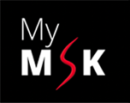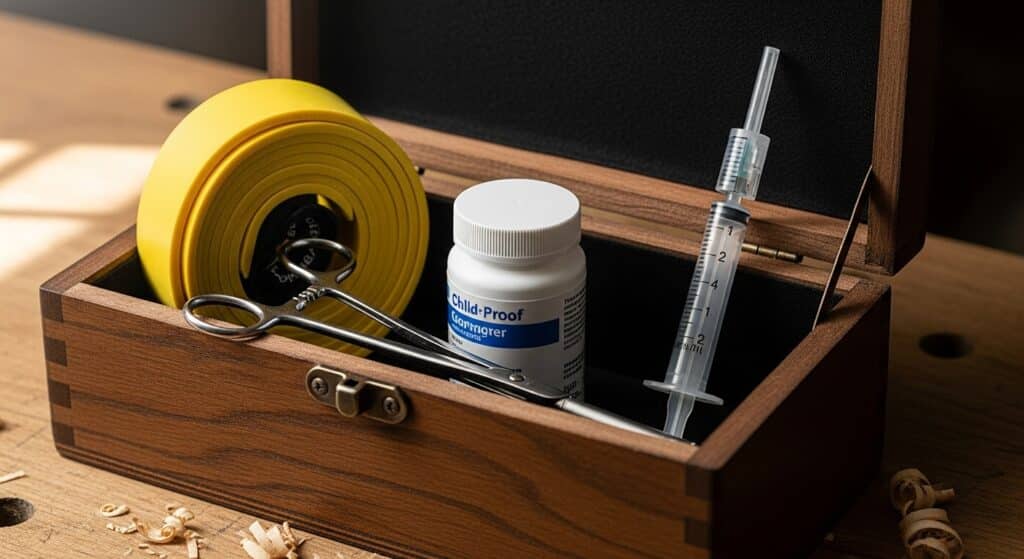When you’re dealing with persistent joint or muscle pain, the path to relief can seem like a confusing maze of options.
Should you be focusing on physical therapy? Is it time to consider an injection? Do you need medication, or is surgery the only real answer? Understanding the role of each treatment is the first step toward making an informed decision about your health.
One of the most common and effective tools in pain management are cortisone injections.
However, it’s not a cure-all, and it’s certainly not the only option. The most successful treatment plans are rarely about a single “magic bullet” but are instead a strategic combination of therapies tailored to your specific condition.
At MyMSK Clinic, our philosophy is to empower patients with knowledge. This guide will compare and contrast the four pillars of musculoskeletal pain management—physical therapy, oral medication, cortisone injections, and surgery—to help you understand the pros, cons, and ideal uses for each.
Pillar 1: The Foundation – Physical Therapy
Physical therapy is the cornerstone of long-term musculoskeletal health. It’s an active approach focused on treating the root mechanical causes of your pain, not just the symptoms.
- How it Works: A qualified Physical therapist assesses your movement patterns, strength, and flexibility to identify weaknesses or imbalances. They then design a personalised program of exercises and stretches to strengthen supporting muscles, improve mobility, correct poor posture, and restore proper biomechanics.
- Pros:
- Addresses the underlying cause of the pain.
- Provides long-term, sustainable results.
- Empowers you to take control of your condition.
- Improves overall strength, balance, and body awareness.
- Completely non-invasive with minimal side effects.
- Addresses the underlying cause of the pain.
- Cons:
- Results are gradual and require consistent effort.
- Requires a significant time commitment from the patient.
- Can be difficult or painful to perform if inflammation is severe.
- Results are gradual and require consistent effort.
- Best For: Almost every type of non-acute musculoskeletal pain. It’s essential for chronic conditions like osteoarthritis, tendonitis, and back pain, and is a critical component of both post-injection and post-surgical recovery.
Pillar 2: The Daily Manager – Oral Medication (NSAIDs)
Over-the-counter or prescription anti-inflammatory drugs (like ibuprofen or naproxen) are often the first thing people reach for when pain strikes.
- How they Work: These medications work systemically (throughout your whole body) to reduce inflammation and block the chemical signals that cause pain.
- Pros:
- Convenient and easily accessible.
- Effective for managing mild to moderate pain and inflammation.
- Can help you stay functional during a painful flare-up.
- Convenient and easily accessible.
- Cons:
- Masks the pain without fixing the underlying problem.
- Long-term use carries risks of stomach, kidney, and cardiovascular side effects.
- The body can build a tolerance over time.
- Masks the pain without fixing the underlying problem.
- Best For: Short-term management of acute pain (e.g., after an injury) or for taking the edge off chronic pain to allow you to function. It is best used as a supportive measure, not a primary long-term strategy.
Pillar 3: The Targeted Intervention – Cortisone Injections
This is where cortisone injections fit in. They are a powerful, targeted tool designed to solve a very specific problem: severe, localized inflammation.
- How they work: A specialist injects cortisone directly into the site of pain, whether it’s an inflamed joint, bursa, or tendon sheath. This delivers a powerful anti-inflammatory effect far stronger than what oral medications can achieve, right where it’s needed most.
- Pros:
- Rapid and Powerful Relief: Can significantly reduce severe pain and inflammation within days.
- Highly Targeted: Works directly at the source of the problem without the systemic side effects of oral NSAIDs.
- Diagnostic Benefits: A positive response to an injection can help confirm the exact source of your pain.
- Enables Physical Therapy: This is a crucial benefit. By breaking the cycle of severe pain and inflammation, an injection creates a “window of opportunity” where you can effectively engage in physical therapy and address the root cause of the issue.
- Rapid and Powerful Relief: Can significantly reduce severe pain and inflammation within days.
- Cons:
- The effects are temporary (from a few weeks to several months).
- It doesn’t fix the underlying mechanical issue (e.g., a weak muscle or worn cartilage).
- The number of injections you can have in one area is limited to avoid potential tissue damage.
- The effects are temporary (from a few weeks to several months).
- Best For: Treating acute, severe flare-ups of conditions like arthritis, bursitis, tendonitis, and frozen shoulder. It is the ideal tool to bridge the gap when pain is too severe for physical therapy to be effective on its own.
Pillar 4: The Definitive Solution – Surgery
Surgery is the most invasive option and is reserved for when conservative treatments are no longer effective or appropriate.
- How it Works: A surgeon structurally alters, repairs, or replaces the damaged area. This could mean repairing a torn tendon or cartilage or ligament, decompressing a nerve or shaving a disc, or replacing a joint destroyed by end-stage arthritis.
- Pros:
- Can provide a permanent, definitive solution to a structural problem.
- Can dramatically improve function and eliminate chronic pain.
- Can provide a permanent, definitive solution to a structural problem.
- Cons:
- Highly invasive with significant risks (infection, blood clots, etc.).
- Involves a long and often painful recovery and rehabilitation period.
- Should be considered a last resort.
- Highly invasive with significant risks (infection, blood clots, etc.).
- Best For: End-stage conditions like “bone-on-bone” osteoarthritis, severe joint instability, or acute traumatic injuries where the structure is compromised beyond self-repair.
The MyMSK Clinic Approach: Building Your Personalised Plan
The most effective pain management strategy rarely relies on just one pillar. At MyMSK Clinic, we believe in a comprehensive, integrated approach. The key is using the right tool for the right job, at the right time.
Our specialists at our Manchester and Burnley clinics use expert assessment and diagnostic ultrasound to get an accurate diagnosis first.
From there, we can build your plan. A patient with severe shoulder tendonitis, for example, might receive a cortisone injection to settle the debilitating inflammation.
That pain relief then allows them to successfully complete a physical therapy program to strengthen their rotator cuff and prevent the problem from returning.
Conclusion: Choose Your Tools Wisely
Think of these options as a toolkit. Physical therapy is your set of tools for building a stronger foundation. Oral medication is the fast-acting glue for temporary fixes. Surgery is the heavy machinery for a complete rebuild. And a cortisone injection is the powerful, precise instrument you use to clear away the debilitating inflammation so you can get to work on the real repairs.
If you are struggling with pain and are unsure of the next step, don’t guess. Book a comprehensive consultation with our specialists. We can help you get a clear diagnosis and build a personalised treatment plan that uses the right tools for you.

